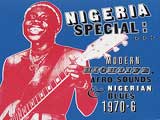If you’re a writer, you’ve likely experienced the other-worldly “flow state” that arises on rare and precious occasions, when you feel a sense of oneness between person and pen, and the words flow forth from your fingers as if your soul itself is dictating.
More often, there’s writer’s block. Every author, journalist, blogger, and poet must learn to hurdle this dreaded obstacle at some point in their career. Few realize that there’s a simple and ancient cure: meditation.
Yoga and meditation have added such ease and depth to my own creative writing that when I realized the correlation, I began searching for the science behind this undeniable mental boost. What I found was proof—and hundreds of meditators who have experienced a “writing flow” so intense that it nearly felt spiritual.
Meditation and the “Ah-Ha!” Moment
Remarkably, this phenomenon is thoroughly explained and documented in scientific journals. In one study, the brainwaves of Tibetan Buddhist monks, lifelong meditators, were recorded and analyzed both in resting and meditative states. The findings show vastly increased activity in gamma waves, which activate when we make problem-solving connections that require multiple parts of the brain working together in harmony. In normal people, these brainwaves only spike for a fraction of a second at a time—literally during “ah-ha!” moments.
For lifelong meditators, these gamma waves are CONSTANTLY activated, to a degree of 25 times greater amplitude than non-meditators, even during normal, everyday moments.
It comes as no surprise that this state of constant “ah-ha!”-awareness increases our creative powers as writers. Imagine you’re trying to iron out the details of a complicated plot point in a story you’re writing, but no solution seems to make sense. It’s a 10-minute meditation and gamma wave spike that will come to your rescue.
Get into Your Characters’ Shoes
When the above-mentioned monks’ brains were studied during active meditation sessions, the parts of the brain responsible for “empathy” skyrocketed to 800 times their normal resting level, a number on-par with the brain activity of someone having an epileptic seizure—all while sitting peacefully in silence.
Conjuring that level of empathy is an invaluable superpower for creative writers. To be able to put yourself into the shoes of your characters and believably describe their emotions takes a deep level of insight and compassion, and meditation provides exactly that.
Short Meditations, Lasting Effects
If you’re unable to commit years of your life to meditation like a Tibetan monk, there’s still good news: even small stints of meditation are proven to increase one’s mental power. In one study, first-time meditators were analyzed over the course of eight weeks, reporting an average of just 27 minutes spent on mindfulness practices each day. At the completion of the study, MR images showed increased gray-matter density in the hippocampus, “in structures associated with self-awareness, compassion, and introspection,” which are all vital skills for creative writers.
Yoga to Change Your Mood
When it comes to writer’s block, these mindfulness techniques allow writers to be more present, more observant, and more creative so that they can move quickly past moments of stagnation. And moving the physical body helps as well; yoga asana (poses) can also be used to enhance writers’ creative output.
Modern science is starting to understand the energetic effects of yoga poses on our mental state, through a psychological concept called “embodied cognition.” It’s the idea that, not only do our bodies respond to our emotions (e.g., when you’re sad, you frown), but our emotions also respond to our bodies (when you force a smile, you feel happier.)
You may have experienced this yourself if you’ve ever been told to strike a “power pose” before a job interview, for example. The advice is often given to those who are feeling nervous: stand like Superman (chest puffed out, head held high, fists on hips), because the confident stance actually makes you FEEL more confident.
In the book Stealing Fire, authors Jamie Wheal and Steven Kotler write, “Five thousand years ago, early yoga practitioners were tinkering with embodied cognition to prompt higher states of awareness. If simply standing like Wonder Woman for a few minutes is enough to produce meaningful changes in our hormonal profile, imagine what practicing a full sequence of yoga postures every morning would do.”
For writers, these movements can put you in a completely different headspace to increase your focus and awareness. If you’ve been sitting slouched over a computer, staring at a blank document for hours, try holding the opposite of that posture (a standing backbend, for example). It can completely change your mindset, creating more energy, motivation, and confidence in your ability.
How It Feels
I recently spoke with David Holzer, a fellow yoga teacher and creator of the DailyOM course “Secret Writing Mantra” about what this practice means for him as a writer.
“Yoga completely transformed my writing,” he says. “It enables me to tap into inspiration every time, without having to wait for my muse to show up. I’m now fearless about going deeper into my writing, and able to direct my focus. I’ve become more disciplined. I use my breath to write in a healthier way.”
In Holzer’s course, he teaches other writers to harness the power of yoga, meditation, and mantra to optimize their writing. His approach is built on a simple sequence that emphasizes the power of mindfulness to help writers find their voice and overcome self-doubt.
How It’s Done
Guided meditations to beat writer’s block are becoming increasingly popular amongst writers. Most of these meditations focus on visualization and passive observation—quieting the mind so that new and novel ideas can arise. These meditations are as easily accessible as opening YouTube or Spotify.
The general technique is to find a quiet place to sit with an erect spine, close your eyes, and simply bring your focus to the breath. When the mind inevitably wanders and brain-chatter arises, just acknowledge the thoughts without judgment, and send them on their way. The act of bringing your awareness back to your breath, as Dan Harris describes it, is like “doing a bicep curl for the brain.” Your mind becomes stronger over time.
Change the Way You Write
The moment writer’s block strikes and you find yourself frozen at your laptop, a 10-minute break to meditate may be the pivotal moment for your project.
One ghostwriter I spoke to had this exact experience.
“I had been sitting at my desk for an hour, just reading and re-reading everything I had written the day before, completely unable to move forward, like my fingers had turned to stone on the keyboard,” she says. “So I decided to close my eyes, and just count my breaths. In, and out. In, and out. And within 15 minutes, it was like a flood-gate had opened in my mind, and the words just started pouring out.”
She concludes with a feeling that few writers ever experience, but that all writers can:
“It was like the words were no longer my own, but the words of a divine spirit. Through meditation, I think I met my muse.”

Megan Mulrine is a writer, editor, and meditation teacher living in Bali, Indonesia. Her guided meditations for overcoming writer’s block can be found on Spotify, and she’s currently hosting Writers’ Workshop Retreats in Bali to help other writers experience the deep flow state achieved through meditation.
The post The Secret to Overcoming Writer’s Block: Meditation by Guest Column appeared first on Writer's Digest.
from WD Blogs – Writer’s Digest https://www.writersdigest.com/writing-articles/by-writing-goal/beat-writers-block/the-secret-to-overcoming-writers-block-meditate







